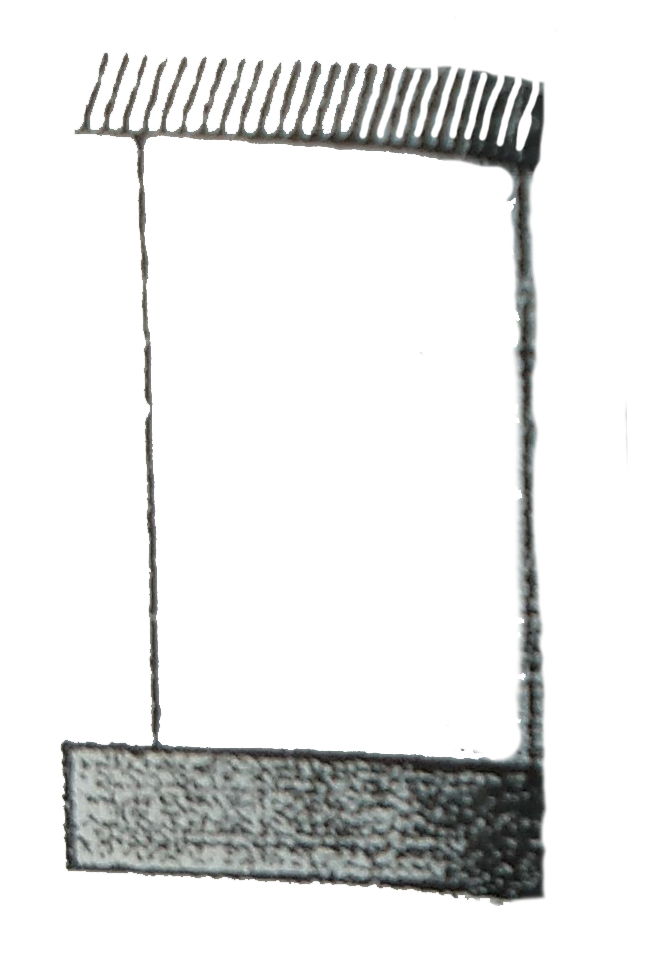Two wires 1 and 2 of the same cross sectional area A=10mm2 and the same length but made of different materials are welded together and their ends are rigidly clamped between two walls, as shown in figure. The respective young's moduli and coefficient of linear expansions are y1=109N/m2,y2=2×109N/m2,α1=6×10−4∘C−1,α2=3×10−4∘C−1 . if temperature of system reduced by 20∘C then

Find the displacement of the joint
0
10 cm
5 cm
2 cm
The correct Answer is:A
Step by step video solution for Two wires 1 and 2 of the same cross sectional area A=10mm^2 and the same length but made of different materials are welded together and their ends are rigidly clamped between two walls, as shown in figure. The respective young's moduli and coefficient of linear expansions are y_1 = 10^9 N//m^2 , y_2 = 2 xx 10^9 N//m^2 , alpha_1 = 6 xx 10^(-4) ""^@C^(-1) , alpha_2 = 3 xx 10^(-4) ""^@C^(-1) . if temperature of system reduced by 20^@C then Find the displacement of the joint by Physics experts to help you in doubts & scoring excellent marks in Class 12 exams.
Updated on:21/07/2023Similar Questions
A steel wire 2mm in diameter is just stretched between two rigid walls at 20°C. If the temperature falls to 10°C, find the tension in the wire. Linear coefficient of expansion of steel = 11×10−6/kandY=2×1011N/m2
View SolutionTwo rods having length l1 and l2, made of materials with the linear coefficient of expansion α1 and α2 were welded together. The equivalent coefficients of linear expansion for the obtained rod:-

View Solution
Knowledge Check
A brass wire 1.8 m long at 27∘C is held taut with negligible tension between two rigid supports. Diameter of the wire is 2 mm, its coefficient of linear expasion, αBrass=2×10−5.∘C−1 and its young's modulus, YBrass=9×1010Nm−2. If the wire is cooled to a temperature −39∘C, tension developed in the wire is
A2.7×102NB3.7×102NC4.7×102ND5.7×102N
Two metal rods of the same length and area of cross-section are fixed end to end between rigid supports. The materials of the rods have Young moduli Y1 and Y2 , and coefficient of linear expansion α1 and α2 . The junction between the rod does not shift and the rods are cooled
View SolutionA uniform steel wire of cross-sectional area 0.20mm2 is held fixed by clamping its two ends. Find the extra force exerted be each clamp on the wire if the wire is cooled from 1000C→0oC. Young's modulus of steel =2.0×1011Nm−2. Coefficient of linear expansion of =1.2×10−5C−1.
View SolutionTwo wires of equal length and cross-section area suspended as shown in figure. Their Young's modulus are Y1 and Y2 respectively. The equavalent Young's modulus will be

View SolutionTwo wires one of copper and other of iron having same cross-section area and lengths 2 m and 1.5 m respectively are fastened end and stretched by a load 10 N. If copper wire is stretched by 2mm then find the total extension of combined wire, YCu=1×1011N/m2 and YFe=3×1011N/m2.
View SolutionA wire 2 mm in diameter is just stretched in between two fixed points at a temperature of 50∘C. Calculate the tension in the wire, when the temperature falls to 30∘C. Coefficient of linear expansion is 11×10−4l∘C and Young modulus is 2.1×1011Nm2
View SolutionA steel wire of cross-sectional area 0.5mm2 is held between two fixed supports. If the wire is just taut at 20∘C, determine the tension when the temperature falls to 0∘C. Coefficient of linear expansion of steel is 1.2×10−5C−1 and its Young's modulus is 2.0×1011Nm−2.
View SolutionA steel wire of cross-sectional area 0.5mm2 is held between two fixed supports. If the wire is just taut at 20∘C, determine the tension when the temperature falls to 0∘C. Coefficient of linear expansion of steel is 1.2×10−5∘C(−1) and its Young's modulus is 2.0×1011Nm−2.
View Solution
